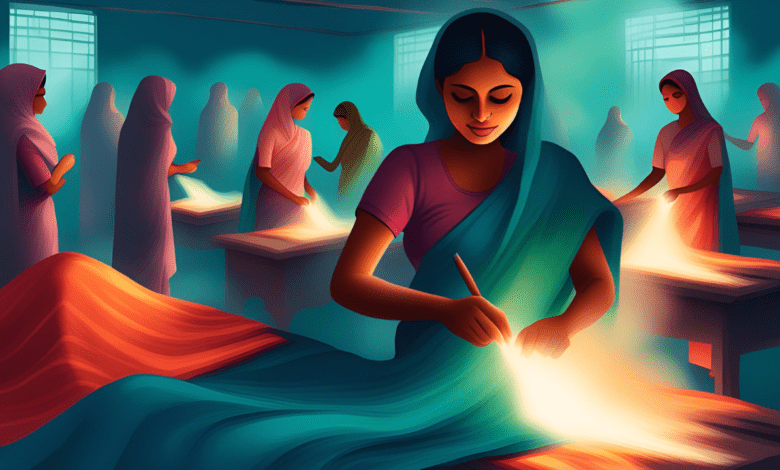Apparel Manufacturing in Bangladesh: Trends and Opportunities

Bangladesh has emerged as a global leader in apparel manufacturing, thanks to its competitive labor costs, skilled workforce, and favorable trade agreements. In recent years, the country’s garment industry has experienced significant growth, attracting attention from international brands and investors alike. This article explores the latest trends and opportunities in apparel manufacturing in Bangladesh.
1. The Rise of Bangladesh’s Apparel Industry
Historical Background
Bangladesh’s apparel industry traces its roots back to the late 1970s when the country began exporting ready-made garments to international markets. Over the decades, the industry has grown exponentially, becoming a vital pillar of the country’s economy. bangladesh clothing manufacturers have played a crucial role in this growth, providing high-quality garments to global brands and retailers. Their ability to produce competitively priced apparel while maintaining international standards has solidified Bangladesh’s position as a key player in the global garment industry.
Key Factors Driving Growth
Several factors have contributed to the success of Bangladesh’s apparel industry, including low labor costs, a large and skilled workforce, preferential trade agreements, and government support for the sector’s development.
2. Current Trends in Bangladesh’s Apparel Manufacturing
Focus on Sustainability
In recent years, there has been a growing emphasis on sustainability in the global fashion industry, and Bangladesh is no exception. Many manufacturers are adopting eco-friendly practices, such as using organic or recycled materials and implementing energy-efficient production processes.
Technological Advancements
To remain competitive in the global market, Bangladesh’s garment manufacturers are increasingly investing in technology. Automation, digitalization, and data analytics are being utilized to improve efficiency, reduce costs, and enhance product quality.
Diversification of Product Range
Bangladesh is expanding its product range beyond traditional apparel items like shirts and trousers. Manufacturers are now producing a diverse range of products, including sportswear, lingerie, knitwear, and accessories, to cater to evolving consumer preferences.
3. Opportunities for Growth and Expansion
Emerging Markets
While Bangladesh already exports garments to major markets like the United States and Europe, there are opportunities to tap into emerging markets in Asia, Africa, and Latin America. Rising disposable incomes and growing consumer populations present new avenues for expansion.
Vertical Integration
Vertical integration, where manufacturers control various stages of the supply chain from raw materials to finished products, offers opportunities for increased efficiency and cost savings. Many companies are exploring vertical integration to strengthen their competitive position.
Investment in Infrastructure
Investments in infrastructure, such as modern factories, transportation networks, and technological capabilities, are crucial for the long-term growth of Bangladesh’s apparel industry. Improved infrastructure enhances productivity, reduces lead times, and attracts more foreign investment.
4. Challenges Facing the Apparel Industry in Bangladesh
Labor Rights and Working Conditions
Despite progress in recent years, issues related to labor rights and working conditions persist in Bangladesh’s garment industry. Ensuring fair wages, safe working environments, and adherence to labor laws remains a challenge for manufacturers and policymakers.
Compliance and Regulatory Requirements
Meeting international standards for product quality, safety, and ethical sourcing is essential for accessing global markets. Compliance with regulations such as the Accord and Alliance initiatives is necessary but can be resource-intensive for smaller manufacturers.
Conclusion
Bangladesh’s apparel manufacturing industry continues to evolve, driven by shifting consumer demands, technological advancements, and global market trends. While the sector faces challenges related to labor rights and compliance, there are ample opportunities for growth and expansion. By embracing sustainability, investing in technology, and addressing key issues, Bangladesh can solidify its position as a leading player in the global apparel market.
FAQs
1. How significant is Bangladesh’s apparel manufacturing industry globally?
Bangladesh is one of the world’s largest apparel exporters, accounting for a significant share of the global market.
2. What are some emerging trends in Bangladesh’s apparel industry?
Emerging trends include a focus on sustainability, technological advancements, and diversification of product ranges.
3. What opportunities exist for growth and expansion in Bangladesh’s apparel sector?
Opportunities include tapping into emerging markets, pursuing vertical integration, and investing in infrastructure.
4. What are the main challenges facing Bangladesh’s apparel industry?
Challenges include labor rights issues, compliance with international standards, and maintaining competitiveness in a rapidly changing market.
5. How can Bangladesh address challenges and capitalize on opportunities in the apparel sector?
Addressing labor rights, investing in technology and infrastructure, and enhancing compliance measures are key steps to overcoming challenges and maximizing opportunities in the apparel sector.

